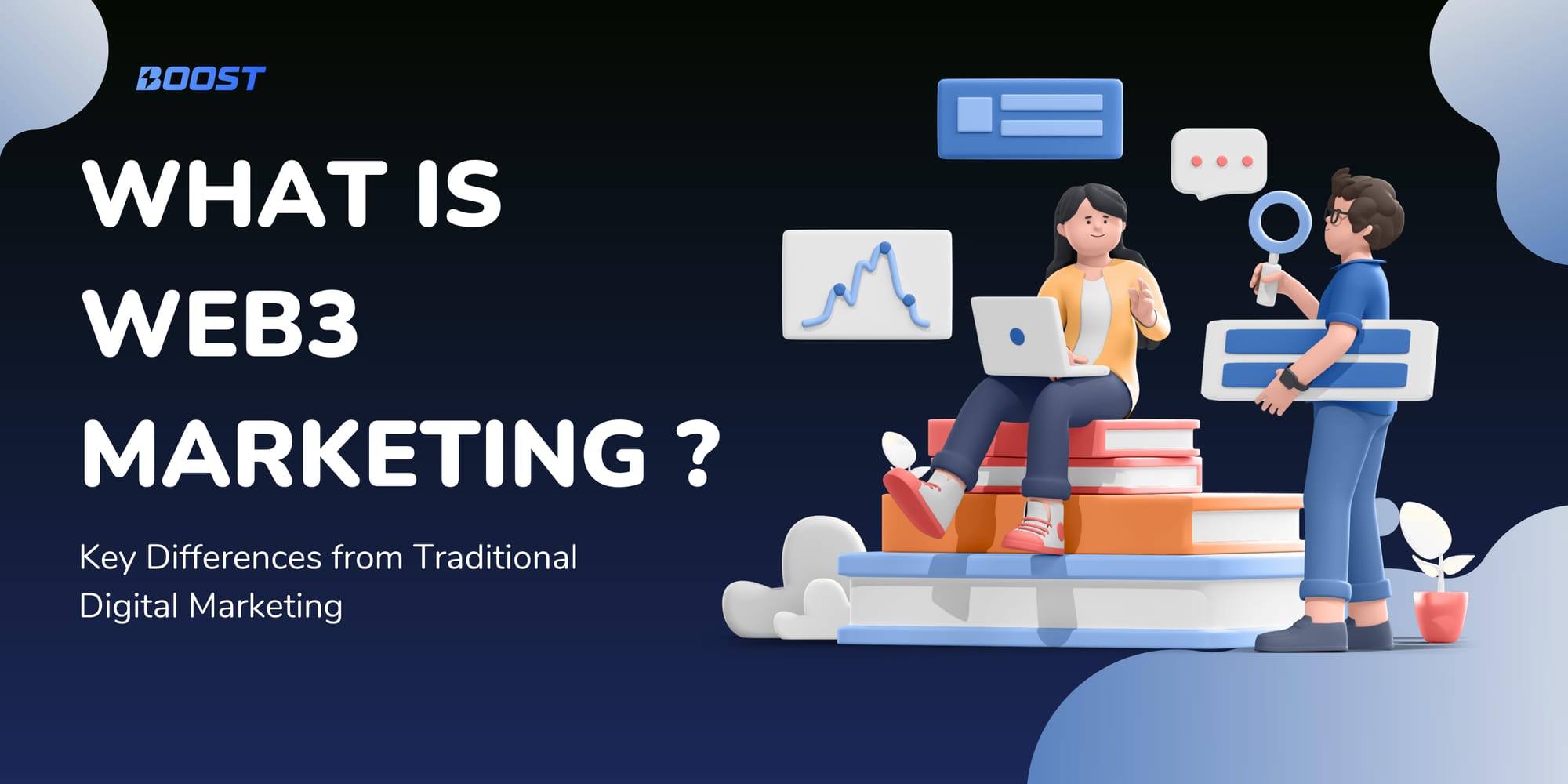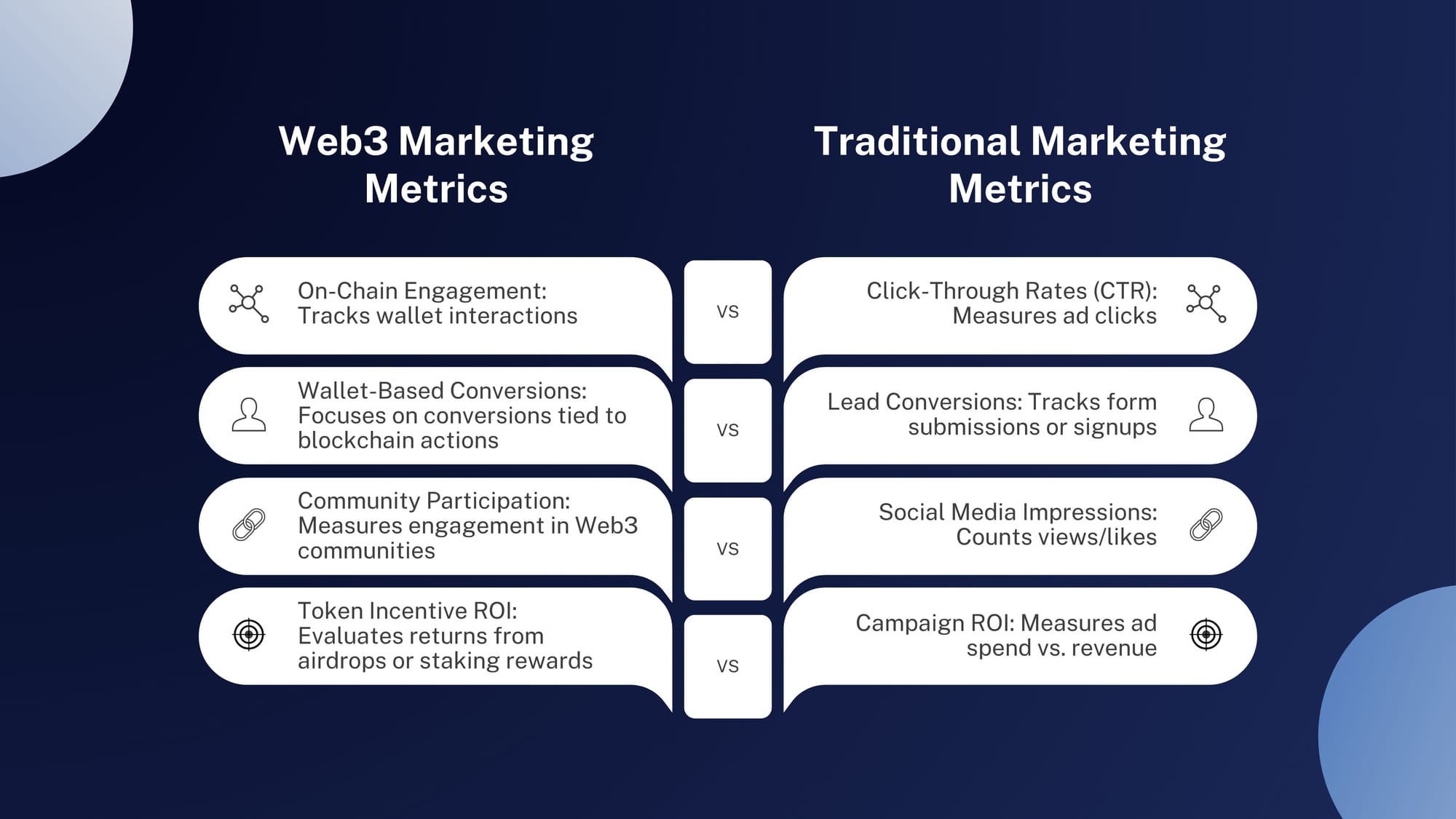What is Web3 Marketing? Key Differences from Traditional Digital Marketing

In today’s fast-evolving digital world, Web3 marketing is transforming how brands engage audiences. Unlike traditional digital marketing, which relies on centralized platforms, Web3 marketing harnesses decentralized technologies, on-chain data, and community-driven strategies to connect with blockchain-savvy users. For Web3 startups and marketers, understanding these differences is key to unlocking growth.
What is Web3 Marketing?
Web3 marketing involves promoting projects within the Web3 ecosystem think blockchain, NFTs, DeFi, and dApps. It’s rooted in decentralization, transparency, and user empowerment, aligning with the core principles of Web3 technologies. Unlike traditional digital marketing’s focus on broad reach through platforms like Google or Meta, Web3 marketing targets crypto-native audiences on platforms like X, Discord, and Telegram.
4 Key Differences Between Web3 and Traditional Digital Marketing
1. Decentralized Platforms vs. Centralized Channels
Traditional digital marketing relies on centralized platforms like Google Ads or Instagram, where algorithms control ad delivery. Web3 marketing operates on decentralized platforms, such as blockchain-based social networks or NFT marketplaces, prioritizing user control and data sovereignty.
For example, a traditional campaign might target demographics on Facebook, while a Web3 campaign uses Boost’s Advertiser tools to reach users based on their blockchain activity, like owning specific NFTs. This enables hyper-targeted Web3 advertising that aligns with decentralized values.
2. On-Chain Data vs. Third-Party Cookies
Traditional digital marketing depends on third-party cookies for user tracking, but privacy regulations are phasing these out. Web3 marketing leverages on-chain data public blockchain transactions tied to wallet addresses to gain insights into user behavior, like token holdings or dApp interactions, without compromising privacy.
Boost’s Advertiser platform uses on-chain data to segment audiences, delivering personalized campaigns that drive higher conversions than traditional cookie-based methods.
3. Community Focus vs. Broad Reach
Traditional digital marketing aims for mass reach to maximize impressions. Web3 marketing focuses on engaging niche, crypto-savvy communities on platforms like X or Discord. These audiences value authenticity and active participation, often engaging in AMAs or governance discussions.
Boost’s Advertiser tools help brands integrate into Web3 communities by optimizing campaigns for platforms like X, where crypto enthusiasts discuss DeFi or NFTs. This fosters genuine engagement over broad exposure.
4. Token Incentives vs. Traditional Promotions
Traditional promotions use discounts or loyalty points, but Web3 marketing introduces token-based incentives like airdrops, staking rewards, or governance tokens. These align users with a project’s long-term success, creating a sense of ownership.
With Boost, marketers can design token-driven campaigns, targeting users likely to engage based on their on-chain history, boosting participation and loyalty.
Why Web3 Marketing Matters
Web3 marketing is critical for projects aiming to stand out in the decentralized economy. Web3 audiences are engaged but discerning, demanding authenticity and value. A misaligned campaign can alienate users, while a targeted one can drive exponential growth. By leveraging decentralization, on-chain data, and community engagement, Web3 marketing connects with users already invested in blockchain.

How Boost Powers Web3 Marketing
Boost’s Advertiser platform is built for Web3 success, with features like:
- Wallet-Based Targeting: Reach users based on blockchain activity, such as token holdings or dApp usage.
- Multi-Platform Campaigns: Run ads on Web3 ad networks from one dashboard.
- Real-Time Analytics: Track performance with on-chain metrics to optimize ROI.
- Community Integration: Engage Web3 audiences with tailored content and incentives.
These tools help marketers move beyond traditional digital marketing’s limitations and tap into Web3’s potential.
How to Get Started with Web3 Marketing
- Define Your Audience: Use on-chain data to target NFT collectors, DeFi users, or other Web3 segments.
- Choose Web3 Platforms: Focus on X, Discord, or blockchain ad networks for maximum impact.
- Create Authentic Content: Craft content that reflects Web3 values like transparency and decentralization.
- Leverage Boost’s Tools: Use Boost’s Advertiser platform to launch and track campaigns.

Final thought
Web3 marketing is a game-changer, offering new ways to engage audiences through decentralization, on-chain data, and community focus. Unlike traditional digital marketing, it prioritizes transparency and user empowerment, making it ideal for Web3 projects. Boost’s Advertiser platform equips marketers with the tools to succeed in this space, from precise targeting to transparent analytics.
